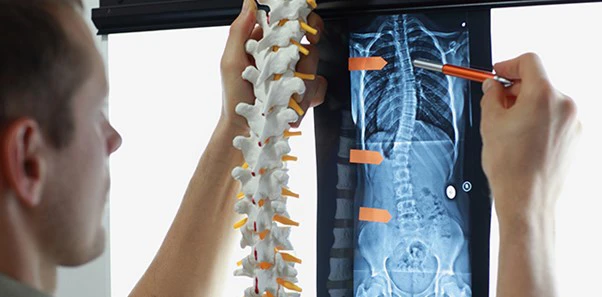Effects Of An Adjustment in Nelson Tasman
Effects Of An Adjustment in Nelson Tasman

Recent scientific studies are revealing a new understanding about how chiropractic spinal adjustments in Nelson Tasman work. Today, over a hundred years on from the ‘first’ chiropractic adjustment, we know much more about how the brain and the rest of the central nervous system functions. And we are beginning to understand the big picture of how chiropractic adjustments really work.
What is a subluxation in Nelson Tasman?
Chiropractors adjust dysfunctional segments in your spine called subluxations. Originally, many people thought that dysfunctional ‘subluxated’ spinal segments were ‘out of place’, or misaligned, and that this put pressure on the nerves exiting the spine. We now know that this theory is not really the best way to describe what a subluxation is. We have come to understand that we don’t really put bones back in place when we adjust the spine. A vertebral subluxation is not so much the condition of a bone being out of place; it is more that a bone is functioning or moving in a less than ideal way – in a manner that is not ‘normal’ for the body.
The Reality Check
If you would like to know more about this cutting-edge research, read Dr Heidi Haavik’s book The Reality Check. A recent wave of scientific discovery has quite clearly revealed that the brain retains its ability to adapt to its ever-changing environment throughout life. It has also become clear to neuroscientists how important it is for our brains to maintain an accurate and up-to-date inner ‘map’ of the location of our muscles and joints in 3D space. Without this inner map, our brain is unable to properly control our body. If you think about it, it’s really very simple. Most of what you perceive as reality is simply what your brain considers reality to be, or your brain’s translation and interpretation of all the information it gets from its sensory receptors (in your ears, eyes, skin, muscles, etc.). With this in mind, can you be sure that what you see is a complete and accurate reflection of what is in front of you?
Spinal function seems to be one factor the brain uses as part of its integration of all information to create your inner virtual reality.
Neuroscientists know that this is not the case. For example, our eyes interpret the colour of an object based on what colour we think it should be, which is influenced by the colour of nearby objects. Our brain basically fills in the gaps, as needed, based on past experiences and expectations. This is where chiropractic comes into the picture. Research indicates that vertebral subluxations lead to changes in the information that part of the spine sends to the brain.

Instead of the brain receiving information that the subluxated spinal segment is moving as it should, it will get different information. It may get information that the subluxated segment is moving more than ‘normal’, not moving much at all, or just moving differently to ‘normal’. What’s really interesting is that when spinal segments don’t move properly it influences how the brain perceives and responds to other sensory information. Spinal function seems to be one factor the brain uses as part of its integration of all information to create your inner virtual reality. When this happens it can result in a breakdown in proper movement control that influences human performance and can end up causing pain and other dysfunction.
Klutze Syndrome
Chiropractic care plays a role in assisting those who display poor proprioceptive function which has been dubbed ‘Klutz Syndrome’. Proprioception means your brains ability to know where all your body parts are when you close your eyes. You rely on this sense to be able to move without making mistakes. If a subluxation alters your inner map your proprioceptive function will be impaired. This may mean you may not accurately know where your arms or legs are when your eyes are closed, which means you are more likely to be clumsy and accident prone. Recent research has objectively demonstrated that chiropractic adjustments can improve proprioception, 2,3 which means the brain will be better able to respond to sensory stimuli and control limb function and movement more accurately. To put it simply, chiropractic care improves the communication between the brain and body and results in better control of the core muscles during body movements, so that you are at less risk of injury. 4 Research is showing that a single session of chiropractic care may improve core muscle activation 5 and increase muscle contractions that are equivalent to those seen following three weeks of strength training.
This has got to be good news for patients seeking to enhance their athletic performance and prevent injuries from occurring!
Read more on this topic here.
References
- Haavik & Murphy. J Electromyogr Kinesiol. Apr 5 2012;22(5):768-776.
- Haavik & Murphy. Journal of Manipulative & Physiological Therapeutics. 2011;34:88- 97.
- Holt et al. JMPT. Apr 2 2016.
- Malliou et al. Journal of Back and Musculoskeletal Rehabilitation 17: 101–104 101
- Marshall & Murphy. JMPT. 2006;29:196-202.
- Niazi et al. Exp Brain Res. 2015;233:1165-1173.
Acknowledgments
- Dr. Heidi Haavik – BSc(Physiol) BSc(Chiro) PhD
- Dr. Kelly Holt – BSc, BSc(Chiro), PGDipHSc, PhD
- Dr. Jenna Duehr – BChiro, BHSC (Nursing), MHSc
Monday
2:00pm - 6:30pm
Tuesday
8:00am - 11:30am
2:00pm - 6:30pm
Wednesday
8:00am - 11:30am
2:00pm - 6:30pm
Thursday
8:00am - 11:30am
Friday
Closed
Saturday & Sunday
Closed
Connected Chiropractic
13/643 Rocks Road
Moana, Nelson 7011



